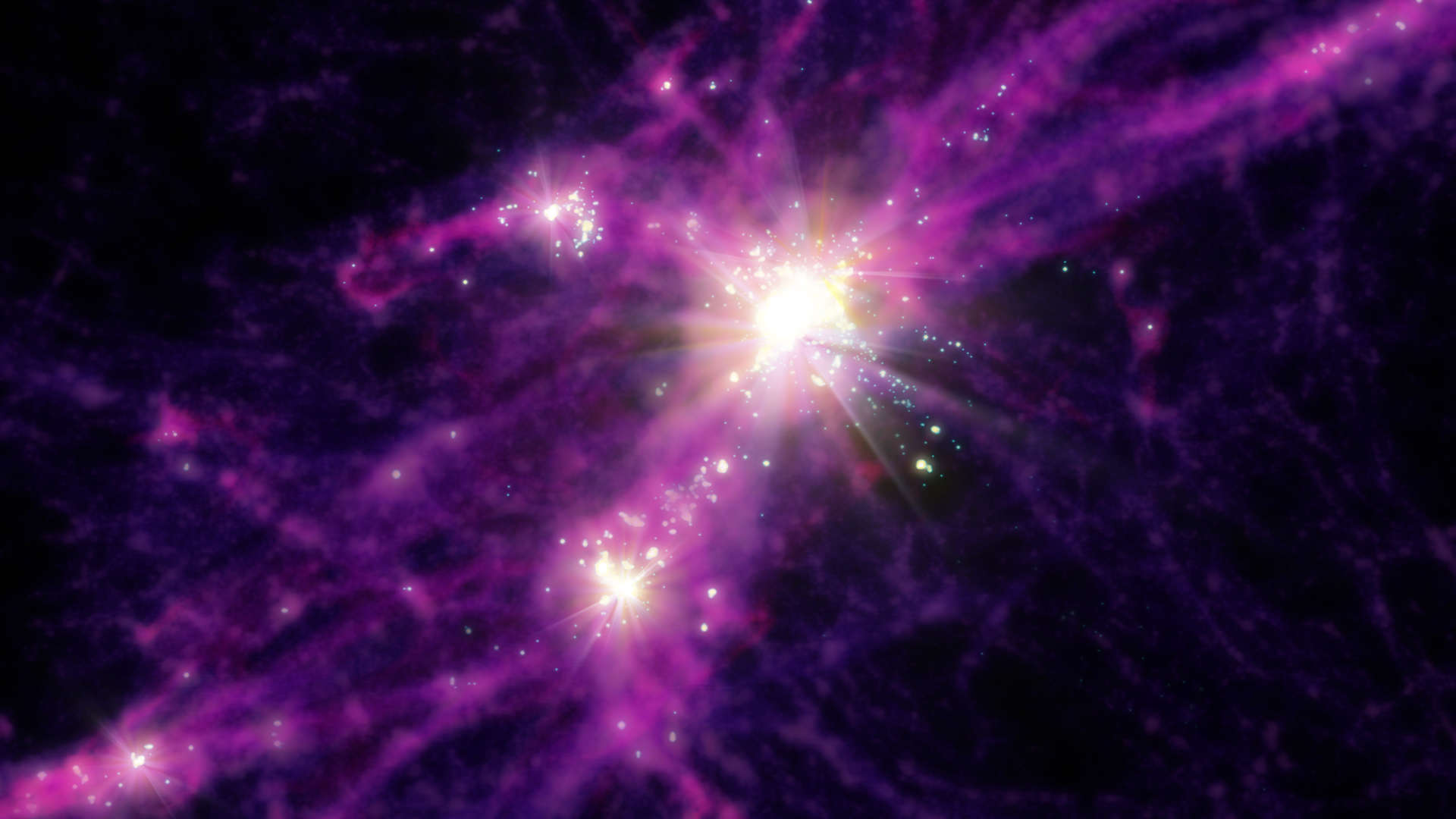The brightness of a galaxy in space is usually determined by its mass. However, some new research shows that less massive galaxies can actually glow just as brightly as larger ones. Due to irregular and bright bursts of star formation, some young galaxies seem deceptively large. The new findings are detailed in a study published on October 3 in the Astrophysical Journal Letters.

The first images obtained by the James Webb Space Telescope (JWST) in 2022 were striking in their brightness. This has raised the question of why such young galaxies look so big and bright, as if their formation took place an instant after the Big Bang.
Astrophysicist from Northwestern University, Claude-André Faucher-Giguère, noted: “The discovery of these galaxies was a big surprise because they were substantially brighter than anticipated.” He explains that usually a galaxy becomes bright due to its large mass, but new research indicates the possibility of the formation of bright galaxies in the cosmic dawn without a long time for their evolution.
Epoch of the cosmic dawn
The cosmic dawn occurred approximately 100 million to 1 billion years after the Big Bang and included the formation of the first stars and galaxies. JWST made it possible to obtain new data that expanded our knowledge about this period of space history.
A team of researchers used computer simulations as part of the Feedback of Relativistic Environments (FIRE) project to study how galaxies formed in the early Universe. These simulations combine astrophysical theory and advanced algorithms to recreate the evolution of galaxies, taking into account the mass, energy, momentum and chemical composition associated with stars.
According to Guochao Sun, an astrophysicist at Northwestern University, the key point is the galaxy’s ability to generate enough light in a short period of time. This may be the result of either the massiveness of the galaxy, or the properties of flares of light brightness. In the latter case, the mass of the galaxy should not necessarily be large.
Results of research in simulation
Simulations in the study showed that the galaxies formed with the same brightness as observed by JWST. Early galaxies that formed at cosmic dawn might have had stars that formed explosively when stars began to appear and disappear periodically. This is known as explosive star formation, and it differs from the evolution of our Milky Way galaxy.
Explosive star formation is especially common in low-mass galaxies. Although the details of this process remain the subject of additional research, the team believes that this happens when the initial bursts of star formation are replaced by supernova explosions after several million years. The gas is ejected and returned, contributing to the formation of new stars, and this sequence repeats. As galaxies get more massive, gravity gets stronger and supernovae explode, but they don’t push out gas as gravity holds it down. This leads to more stable galaxies.
Faucher-Giguère added that most of the light in the galaxy came from the most massive stars, which burned faster and had a shorter lifespan. The brightness of a galaxy is determined by the number of stars that have appeared over the past few million years, not by the mass of the galaxy as a whole.
Earlier we reported on how James Webb spotted the faintest galaxy of the early Universe.
According to popsci.com
Follow us on Twitter to get the most interesting space news in time
https://twitter.com/ust_magazine
